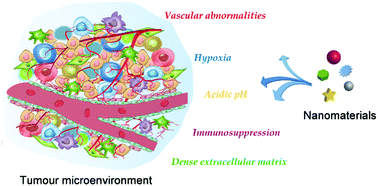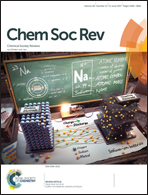Nanoparticle design strategies for enhanced anticancer therapy by exploiting the tumour microenvironment
Abstract
Nanovehicles can efficiently carry and deliver anticancer agents to tumour sites. Compared with normal tissue, the tumour microenvironment has some unique properties, such as vascular abnormalities, hypoxia and acidic pH. There are many types of cells, including tumour cells, macrophages, immune and fibroblast cells, fed by defective blood vessels in the solid tumour. Exploiting the tumour microenvironment can benefit the design of nanoparticles for enhanced therapeutic effectiveness. In this review article, we summarized the recent progress in various nanoformulations for cancer therapy, with a special emphasis on tumour microenvironment stimuli-responsive ones. Numerous tumour microenvironment modulation strategies with promising cancer therapeutic efficacy have also been highlighted. Future challenges and opportunities of design consideration are also discussed in detail. We believe that these tumour microenvironment modulation strategies offer a good chance for the practical translation of nanoparticle formulas into clinic.



 Please wait while we load your content...
Please wait while we load your content...